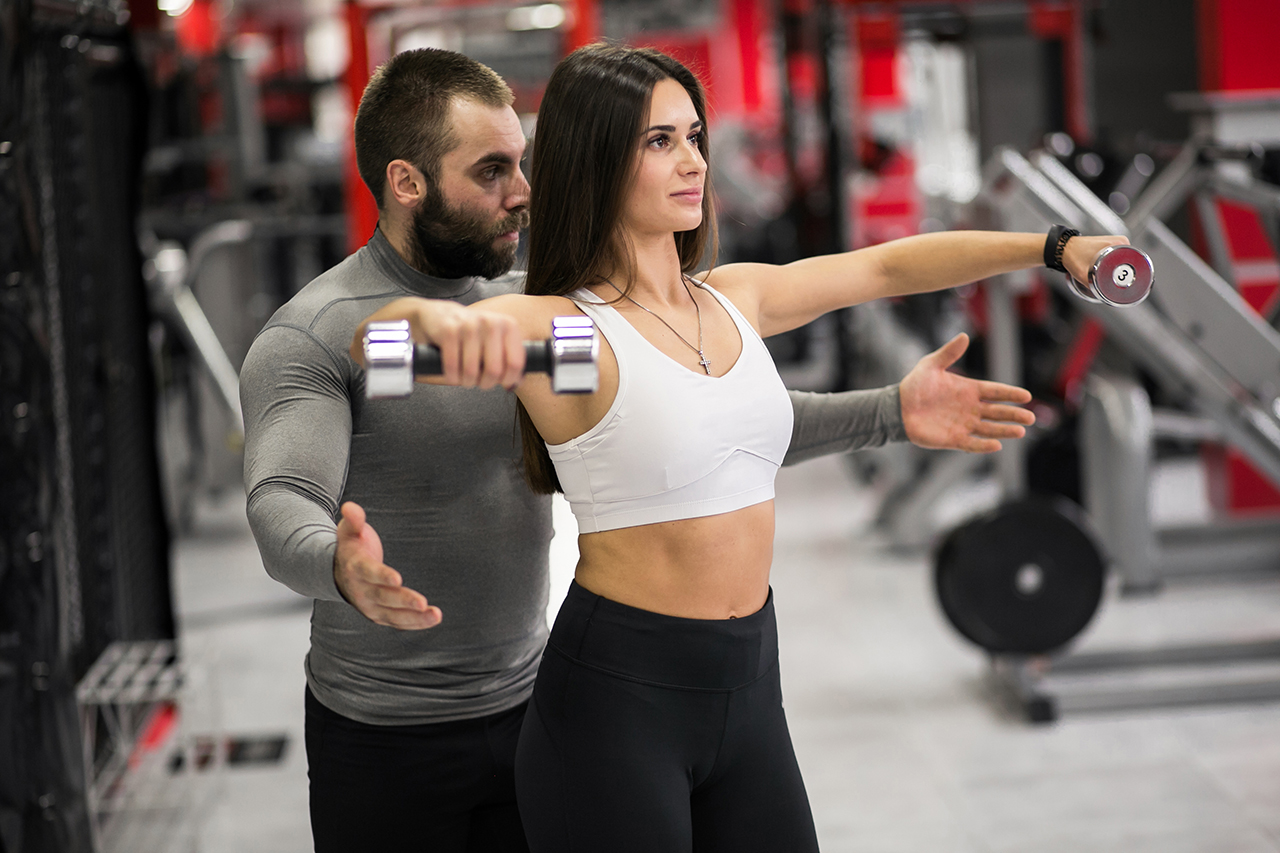Overhead barbell movements are usually the king of exercises when it comes to developing the deltoids.
However, diversifying the intense workouts with less intense, but more movement-control involving, unilateral exercises, will definitely lead to a positive adaptation, on a neuro-muscular level.
| Exercise | Number of Sets | Number of Repetitions | Muscle Sector Involved |
|---|---|---|---|
| One-arm dumbbell shoulder press | 5 | 15,12,10,10,8 | Primarily front deltoids |
| One-arm dumbbell lateral raises | 4 | 12 | Primarily side deltoids |
| Dumbbell front raises | 4 | 10 | Primarily front deltoids |
| Dumbbell rear flys | 5 | 12 | Rear deltoids |
One arm dumbbell shoulder presses

This one-sided version of the shoulder press movement can be done either with your hand on your hips, or, while holding on to something.
Seated one arm dumbbell shoulder presses are also an option, so feel free to improvise with this exercise and do it in whichever way feels most comfortable.
Execution
- Step on your feet slightly wider than shoulder width to maintain balance
- Lift the dumbbell up, so that your arm is at a 90-degree angle
- Place the opposite arm on your hip
- Push the dumbbell up, without completely locking out your elbow- Maintain constant tension on the shoulder muscles
- Let the dumbbell down to its original 90-degree position
The execution is pretty much the same for the other variations, excluding the opposite hand being on the hip.
Dumbbell one arm lateral raise

This one-sided lateral raise is the perfect isolating movement for the deltoids, which primarily focuses on the side deltoids.
Execution
- Grab the dumbbell, starting with your stronger arm (This will lead to a higher cardio-vascular activation; hence the weaker arm’s work will be more optimal)
- Grab on to something with your other arm for support
- Tilt your body slightly, with your supporting arm extended
- Keep the elbow slightly bent, static at that position
- Lift the dumbbell up, without using inertial movements to support it- Solely focus on muscle contraction and maximum resistance
- Let the dumbbell down to its original position
Dumbbell front raises

This exercise can either be done simultaneously with both arms, or in an alternating fashion, taking turns on each arm for 1 rep.
Pick whichever feels best for you.
Execution
- Stand on your feet stably
- Grab the dumbbells and keep them in front of you, so that their sides point to one another, as illustrated
- Lift the dumbbell/s up
- Proceed to the opposite arm/ let them down to their original position
- Proceed to the next rep
Keep moderate pace and constant tension upon the deltoids. Once you reach failure, you can use inertial movements (leaning forward in this case) to squeeze out a couple more repetitions beyond failure. Check out our cheat principle article.
Dumbbell rear flys

This is a simple rear deltoid fly, to finish out the workout, done in 5 sets of 12.
Execution
- Pick an appropriate weight
- Sit down on the bench
- Lean forward, so that your body is nearly fully relaxed on the legs
- Keep the dumbbells below your legs, with the elbows slightly bent
- Tense the rear deltoids
- Lift the dumbbells up, contracting the rear deltoids
- Let the dumbbells down to their original position
Due to the high volume of this workout, appropriate weights should be picked for each exercise.
A 10-15 minute warm up, going into the workout is a MUST- Stretch, rotate, start off with lighter weights to get the musculature ready for action.
Proper exercise execution should not be compromised for higher weights. Let us know how this dumbbell shoulder workout worked for you!

